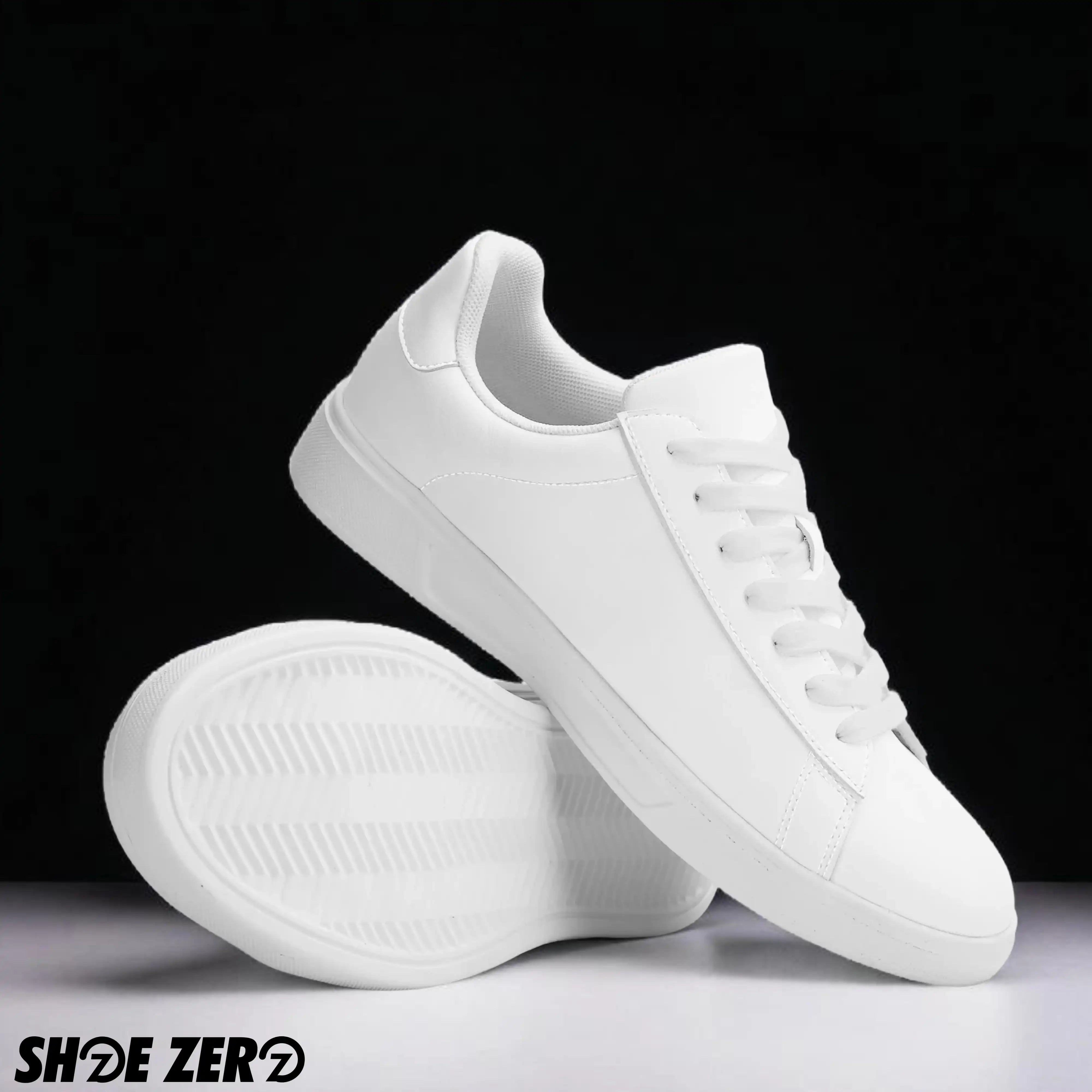Are you tired of slipping and sliding in your shoes, risking potential accidents and injuries? Whether it's icy sidewalks, slippery restaurant floors, or smooth tennis courts, having non-slip shoes can make a world of difference in your safety and stability. In this comprehensive guide, we'll explore 14 practical ways to transform your regular shoes into non-slip footwear. From simple DIY techniques to selecting the right non-slip shoes for your workplace, we've got you covered. Let's dive in and put an end to those slippery situations!
14 Ways You Can Do To Make Shoes Not Slippery
Slipping is not only inconvenient but also hazardous. To keep you on your feet and prevent accidents, here are 14 effective methods to make shoes less slippery & non-slip:

1. Scuff the Outsoles
Scuff the outsoles with sandpaper. Scuffing the outsoles of your shoes can significantly enhance their grip. By roughening the surface, you create more traction, reducing the chances of slipping. There are various ways to scuff your outsoles:
a. Sandpaper
Rub sandpaper on the outsoles in a circular motion to roughen them up. Focus on areas that tend to slip the most, such as the ball and heel of the shoe.
b. Metal Nail Files
Using a metal nail file, gently scrape the outsoles to create a textured surface. This method is particularly useful for dress shoes or shoes with delicate materials.
c. Walk on Rough Surfaces
Wear your shoes. Simply walking on rough surfaces like concrete or gravel can help wear down the outsoles naturally, enhancing traction over time.
2. Use Hairspray
Believe it or not, hairspray can be a quick fix to make your shoes non-slip. Spray a layer of hairspray on the outsoles and let it dry completely. The sticky residue will provide extra grip.
3. Traction Spray
Try traction spray for shoes. Invest in a traction spray specifically designed for shoe outsoles. These sprays create a non-slip coating, perfect for slippery surfaces.
4. Use Sand and Spray Adhesive
Mix sand with a spray adhesive and apply it to the outsoles. The sand particles will add texture, making your shoes slip-resistant.
5. Use Salt and Rubber Glue
Create a mixture of salt and rubber glue, then apply it to the outsoles. This DIY approach can offer decent traction on various surfaces.
6. Use Puff Paints
Tack on puff paint to slippery outsoles. Puff paints are not only for arts and crafts; they can also make your shoes non-slip. Apply the paint to the outsoles in any pattern you like and let it dry.
7. Use Masking Tape
If you need a temporary solution, place strips of masking tape on the outsoles for extra grip. It's a quick fix for unexpected slippery situations.
8. Use a Hot Glue Gun
With a hot glue gun, create a textured pattern on the outsoles. Be careful not to apply too much glue to avoid altering the fit of the shoes.
9. Use Adhesive Bandages or Adhesive Pads
Use Adhesive Bandages. Stick adhesive bandages or adhesive pads on the outsoles to add traction. This method is ideal for dress shoes or shoes with smooth outsoles.
10. Use Silicone Sealant
Silicone sealant is a versatile and durable option to make your shoes slip-resistant. Apply it evenly on the outsoles and let it cure completely.
11. Visit a Cobbler and Have Them Resole Your Shoes.

If you are not confident in your DIY skills, visiting a professional cobbler is always a reliable option. They can recommend the best method for your specific shoes and ensure a high-quality non-slip solution.
12. Invest in Grip Pads
Use ice grips to make shoes non-slip. Grip pads or traction pads are adhesive pads designed to stick to the outsoles of your shoes. They come in various shapes and sizes and are an easy way to add extra traction. Or you could also try non-slip shoe sole grips.
13. Use Ice Grips
If you frequently walk on icy surfaces, consider investing in ice grips that you can attach to your shoes. These specialized accessories provide excellent grip on slippery ice.
14. Use Ankle Straps
For high heels or sandals, ankle straps can help keep your feet secure and prevent slipping. They add stability and reduce the risk of accidents.
4 Tips For Choosing Non-Slip Shoes

1. A Workplace with Non-Slip Shoes
If your job requires you to work on slippery surfaces, such as in a restaurant or hospital, prioritize non-slip shoes with excellent traction. Look for specialized footwear designed for your industry.
2. Test Your Work Environment
Consider the specific conditions of your workplace or the areas where you'll be wearing the shoes. Assess the surface types and potential hazards to determine the level of slip resistance needed.
3. Suitable Material for Shoes
Choose shoes made of materials known for their slip-resistant properties, such as rubber, neoprene, or high-quality synthetic materials.
4. Safety Comes First
While style is important, prioritize safety when choosing non-slip shoes. Ensure they fit well and provide ample support to prevent injuries.
__________________________________________________
Key Takeaways
Slipping and falling can have serious consequences, but learning how to make shoes non-slip can go a long way toward keeping you safe. From simple DIY tricks like using grip pads or scuffing soles to investing in professional non-slip footwear, there are plenty of ways to improve traction and stability on any surface. The right methods not only reduce the risk of accidents but also give you the confidence to walk comfortably wherever life takes you.
At Shoe Zero, we make it easy to combine safety with style. If you’re ready for a fresh pair, explore our custom shoes designed to fit your needs. Step up your performance with custom basketball shoes, go casual with custom low tops or custom high tops, and embrace durability with custom boots. Prefer something breezy? Try our custom sandals. We even offer custom kids shoes for little ones and a full range of custom merch to complete your look.
Stay safe, stay stylish, and let Shoe Zero help you design footwear that’s as unique as you are, non-slip confidence included.
FAQs (Frequently Asked Questions)
1. How to Make Shoes Non-Slip for Restaurants?
For restaurant workers, investing in specialized non-slip shoes is crucial. Additionally, applying grip pads or using adhesive bandages on the outsoles can enhance slip resistance.
2. How to Make Slippers Less Slippery?
To make slippers less slippery, you can try scuffing the outsoles with sandpaper or applying a non-slip spray. Adding grip pads to the bottom can also improve traction.
3. How to Make Tennis Shoes Non-Slip?
For tennis shoes, using grip pads or applying puff paints to the outsoles can make them more slip-resistant. Consider choosing tennis shoes with rubber outsoles for better traction.
4. How to Make Shoes Non-Slip on Various Surfaces?
Scuffing the outsoles or using adhesive materials like sand and rubber glue can enhance the slip resistance of your shoes on various surfaces.
5. How to Make Shoes Non-Slip on Ice?
Walking on icy surfaces can be treacherous, but you can add traction to your shoes by using ice grips or attaching traction pads designed for icy conditions. Scuffing the outsoles can also help.
Co. Author: Mae Kyla M.






